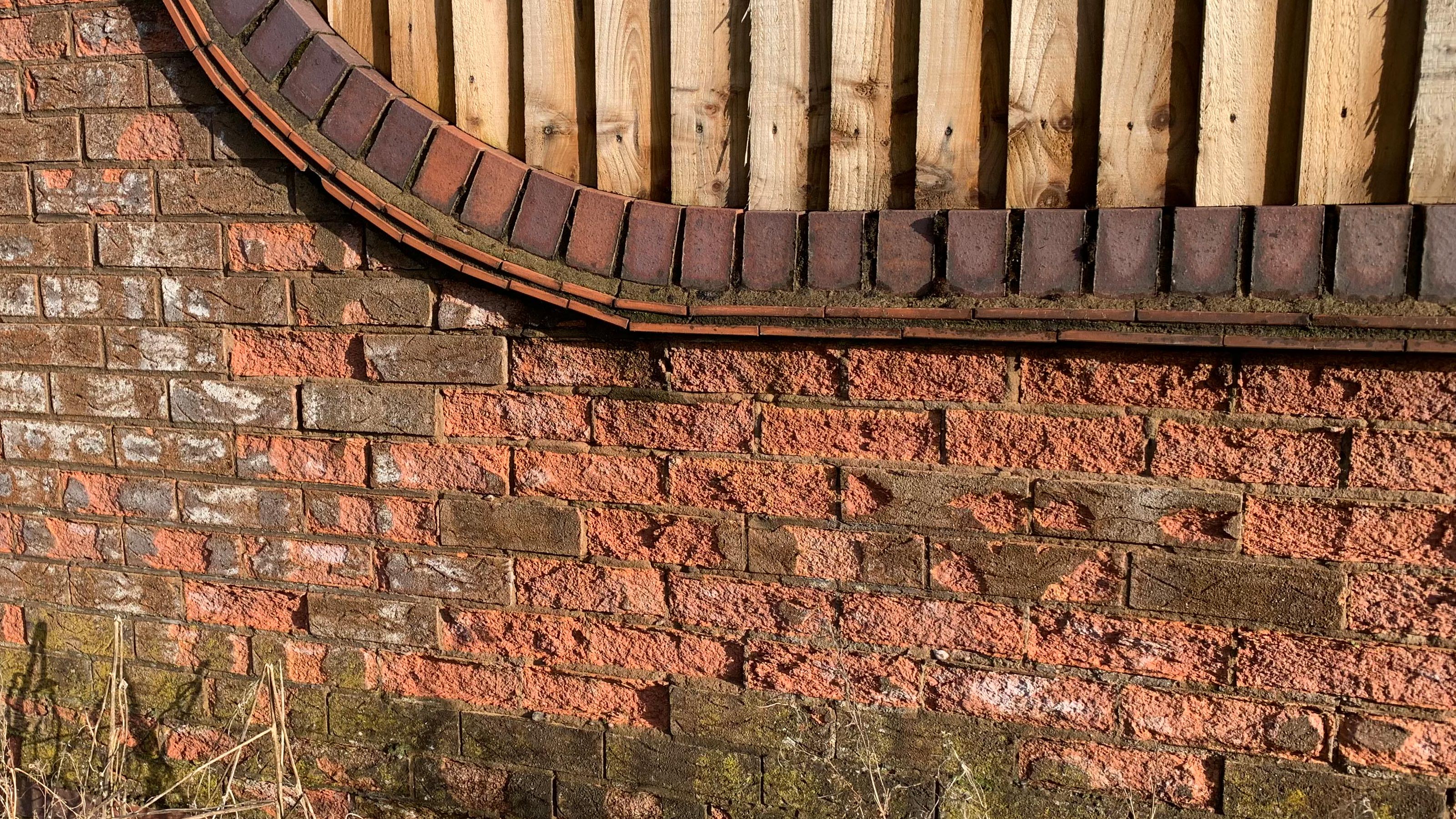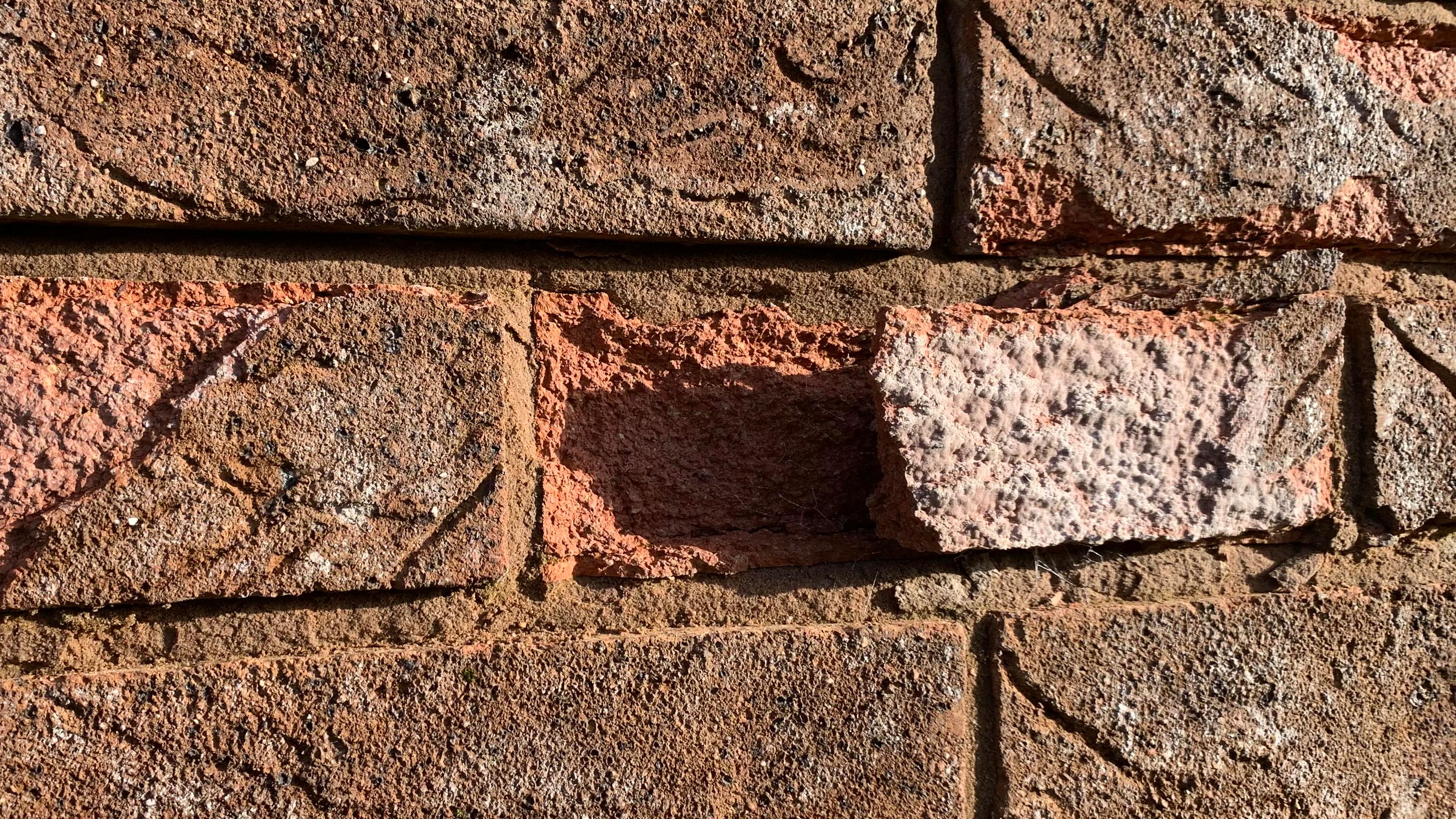Removing a brick from a wall: How to replace damaged bricks
Removing a brick from a wall needs a little know-how to get it right. Expert builder Chris Longhurst reveals the tools and techniques you need to know

Removing a brick from a wall and replacing it means you can say goodbye to damaged and spalling bricks that are creating an eye sore. Bricks get damaged through water ingress and frost expanding and contracting in the brick causing the brick face to break off, this is called spalling.
But it's not just spalling that causes damage, bricks get damaged through drilling, having waste pipes removed, or cracking through settlement. And sometimes they need replacing for other reasons such as a new air brick.
Whatever the reason, it's good to know how to remove a brick and the art of repointing brickwork to give the best, long-lasting finish.
Removing a brick from a wall: What tools will I need?
- Drill
- 7mm Masonry bit
- Club hammer
- Plugging chisel
- Bolster chisel
- Long chisel
- Pointing Trowel
- Tuck pointer
- Hawk
- Bucket
- Sand
- Cement
- Ladder
- Eye protection
- Gloves
Removing a brick from a wall: A step by step guide
Before you get started make sure you have your eye protection on and wear your gloves.
1. Drill holes
The first step in removing a damaged brick is to drill a series of holes side by side and as close to each other as you can. Drill all around the damaged brick, ensuring the masonry drill bit goes the depth of the brick, at least 100mm.
2. Chisel out the mortar
Next take a plugging chisel and tap the chisel into the drill holes and along the length of the damaged brick’s mortar bed. What this process does is to take away the tightness of the mortars grip on the damaged brick and prevents the surrounding bricks from being damaged.
3. Break the brick
The brick is now ready to be removed. Take the bolster chisel and place it vertically onto the damaged brick about a third of the brick along and strike the chisel with a firm blow of the club hammer. This action breaks the brick, repeat this on the rest of the damaged brick to break it into three breaks.
4. Remove the brick
Now take the long chisel and begin to break the sections out, working in the thirds the brick will begin to break out. You may have to angle the long chisel in different positions in order to break down the brick.
5. Tidy up mortar
When most of the brick is removed make sure the old mortar is chiselled from the top, bottom and sides of the surrounding masonry. If this isn’t fully removed, it will hinder the new brick being replaced.
6. Add mortar for new brick
Now the new brick is ready to be added. To do this mix a four-part sand to one-part cement into a whipped cream consistency. Lay a trowel full of mortar on top of the bottom of the existing brick and level to min 10mm. Do the same to the top of the new brick and then to the sides of the existing brick.
7. Push in new brick
Push the new brick gently into the space taking care not to push to bottom bed of mortar with the new brick. Carefully ease the new brick into position, taking time to to remove the excess mortar as the brick enters the space.
8. Finish the job
Using the tuck jointer gently push more mortar into the joints until filled. Wait for the mortar to stiffen and strike (finish) the joint to complete the job, brush gently with a soft brush or sponge to finish.

How many bricks can I safely remove from a wall?
If there are clusters of damaged bricks then it's easier to remove them in batches, generally 5 is safe.
However, if it’s on a house wall do not remove them at the sides of windows or doors as there are lintels above sitting on the bricks around the door and window.
Can I remove bricks from a load bearing wall?
Damaged bricks in load-bearing walls can be removed safely if they are done one at a time. Again, if the load-bearing wall has an RSJ (Rolled Steel Joint) above it the same principle as the window and door applies. You can prop up the RSJ with an adjustable wall prop (known as 'acro props') before you start removing damaged bricks.
What bricks should I use to replace damaged bricks?
Before you start removing damaged bricks, try to get a brick match. Most builders merchants will be able to help with the brick matching. Wrong bricks will stand out and look as bad as the damaged ones.
What does frost or water damaged brick look like?
Weather damaged bricks are called ‘spalled’ bricks. Water enters the masonry through rain over time and during the winter frost expands the masonry and over time the face of the brick blows off.
This usually happens on walls due to their constant exposure to the elements. Also, the softer standard bricks break down more than the semi engineered type.
Another issue with water ingress in masonry is “efflorescence”; this is a white residue that appears on walls and houses. This is often caused when moisture evaporates from the masonry leaving salt crystals on the brick's face.
Get the Homebuilding & Renovating Newsletter
Bring your dream home to life with expert advice, how to guides and design inspiration. Sign up for our newsletter and get two free tickets to a Homebuilding & Renovating Show near you.
Chris is a full-time Staffordshire builder who has more than 40 years of experience in the construction industry. He has his own YouTube channel that has had over 19 million views and 45K subscribers and provides how-to videos to aid builders and DIYers undertaking building tasks around the home.

